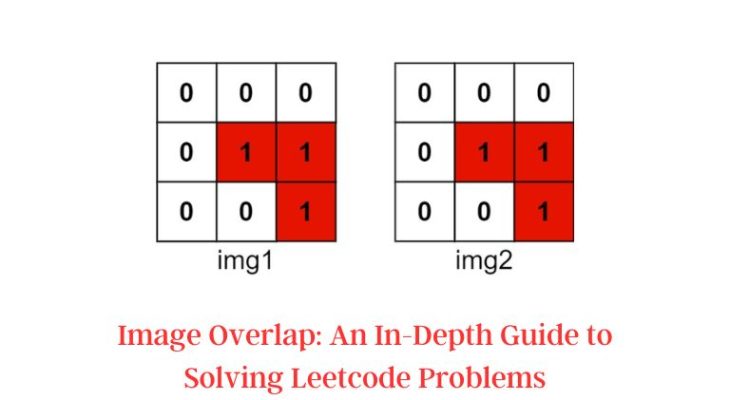Image overlap is a common problem in computer vision that involves finding the number of pixels by which two images can be translated to overlap with each other. Leetcode, a popular platform for coding interviews, has several problems related to image overlap that require a good understanding of the problem and efficient algorithms to solve. In this article, we will provide an in-depth guide to solving image overlap problems on Leetcode.
Contents
Image Overlap Leetcode Problems
Image overlap problems on Leetcode require the knowledge of computer vision, specifically the concept of image translation. The problems involve finding the number of pixels by which two images can be translated to overlap with each other. These problems are essential for understanding computer vision and its applications, especially in object recognition and tracking.
In this article, we provide an in-depth guide to solving image overlap problems on Leetcode. Learn about the problem statement, brute force and optimized solutions, time and space complexity analysis, and sample problems and solutions. Improve your computer vision skills and prepare for coding interviews on Leetcode.
Understanding the Problem Statement
The problem statement typically involves two images represented by 2D matrices of 0s and 1s. The objective is to find the maximum number of overlapping pixels by which the two images can be translated. The images can be translated in any direction, either horizontally or vertically. The output is the maximum number of overlapping pixels.
Brute Force Solution
The brute force solution involves iterating over every possible translation of one image and comparing it with the other image. The translation is done by shifting the rows and columns of the matrix by a certain number of pixels. The maximum overlap is then calculated by counting the number of overlapping pixels for each translation. This solution has a time complexity of O(n^4), where n is the size of the image matrix.
Optimized Solution
The optimized solution involves pre-processing the image matrices to reduce the search space. This is done by finding the locations of 1s in the matrices and creating a list of these locations. The translation is then done by shifting the list of 1s by a certain number of pixels. The maximum overlap is calculated by counting the number of overlapping pixels between the two shifted lists. This solution has a time complexity of O(n^2), where n is the number of 1s in the image matrices.
Time and Space Complexity Analysis
The brute force solution has a time complexity of O(n^4) and a space complexity of O(1). The optimized solution has a time complexity of O(n^2) and a space complexity of O(n), where n is the number of 1s in the image matrices.
Sample Problems and Solutions
- Problem: Given two images represented by binary matrices, return the maximum number of overlapping pixels.
- Solution: The optimized solution can be used to solve this problem. The time complexity is O(n^2), where n is the number of 1s in the matrices.
- Problem: Given a list of images represented by binary matrices, return the pair of images with the maximum number of overlapping pixels.
- Solution: The brute force solution can be used to solve this problem. The time complexity is O(n^6), where n is the size of the matrices.
Conclusion
Image overlap problems are an essential part of computer vision and have several applications in object recognition and tracking. Leetcode provides a platform to practice solving these problems efficiently using optimized algorithms. In this article, we provided an in-depth guide to solving image overlap problems on Leetcode.





